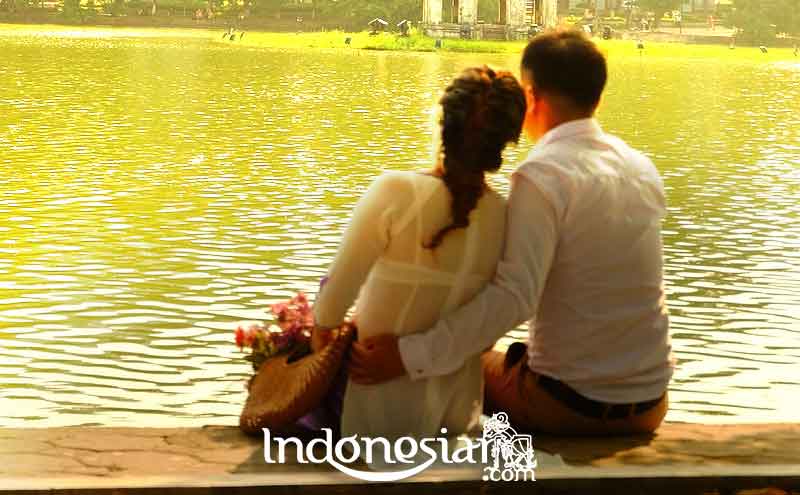Marriage in the Batak tradition is sacred, full of meaning and involves the dignity of the two clans. Therefore, halak hita marriages are very strict and involve many parties.
At least, it involves 4 elements, namely suhi ni ampang na opat of both parties, namely: simolohon (brother or sister of the bride), pamarai (brother or sister of the parents of the bride and groom), paribahan / sihunti ampang (brother or sister and / or aunt of the bride and groom), and bones (uncle).
The stages taken before marriage are quite long, namely martandang (approaching, pdkt), mangaririt (the process of choosing or determining whether a partner is suitable), maroroan / marsijaloan mark (binding a promise / fiance), marhusip, marhata sinamot, marpulut saut (marriage contract / marriage contract) religious promises), mangido pasupasu sian Tulang (ask uncle’s permission), mangadati (traditional events), paulak une / mebat, tingkir stair / tingkir tataring in addition to religious processions according to their religion.
All of this certainly has high historical and philosophical value and involves many parties. Thus, Batak marriages are no longer limited to individual ties of married couples, but have expanded to include clans of both parties, although the process does not have to involve all those with the same clan as the couple.
But according to customary law, it is the name and dignity of the clan they represent to participate in the process.
How do you mean?
This means that after they are cultured, the two clans will always be involved together in all the traditional activities and life of the couple wherever the couple will live. This is because the principle of semarga (mardongan tubu) is “the sada son of the sada boru”.
Women who have become the wives of a clan are called pan Billiards (nyonya marga). Thus, a woman who is married will call her husband’s clan as her clan because she has merged into the billions of her husband’s clan, but when asked what boru, she calls her father’s clan.
It can be concluded, since marriage, women have joined the clan clan of their husbands, or have become the right of their husbands. Well, ito and lae, now you can understand how deep a marriage is in the Batak tradition.
Not to mention when viewed from the time and costs incurred by both parties, especially the paranak (male) since the beginning of the traditional marriage process.
Through a long, time-consuming and costly customary stage, everyone realizes how to start a marriage requires careful preparation, is not arbitrary and must be tied with love (holong).
As a result of this, it is very difficult for Batak husbands and wives to divorce (marsirang), especially if they are already “gabe / maranak marboru” (have both a son and a daughter). To move on to divorce, the two clans of the couple will strongly oppose because it is gabe, one of the 3 basic steps of the Batak people’s life goals: Hagabeon, Hamoraon, Hasangapon.
Batak men are not allowed to divorce their wives except because of death or mahilolong (women leave their husbands for some reason) or because of marmainan (cheating wives). This is because those who are tied in custom are difficult to untie, especially if they have children (marbulung tu ginjang, marurat tu toru).
The customary kings, especially the elements of dalih na tolu, will try to make the marriage sustainable.
What if divorce is inevitable?
Even if a divorce is required, a customary meeting of both parties must be held.
There must be the agreement of the customary elders for the couple’s desire to divorce for reasons that are acceptable to all parties. After that, the divorce is considered valid because it has been “dipagoi” by removing the “tuhe” (stakes marking ownership limits). Of course, with certain consequences that must be endured
Marriage in Batak culture and customs is not like a game and one must be careful in choosing a future wife or husband.
Also understand that the main basis of marriage is love (holong) and acceptance of each other’s shortcomings (marpanganju). That way there is no need for the Batak family divorce anymore. Hopefully the articles from Indonesiar.com can add to your insight into Batak traditions and culture.



































